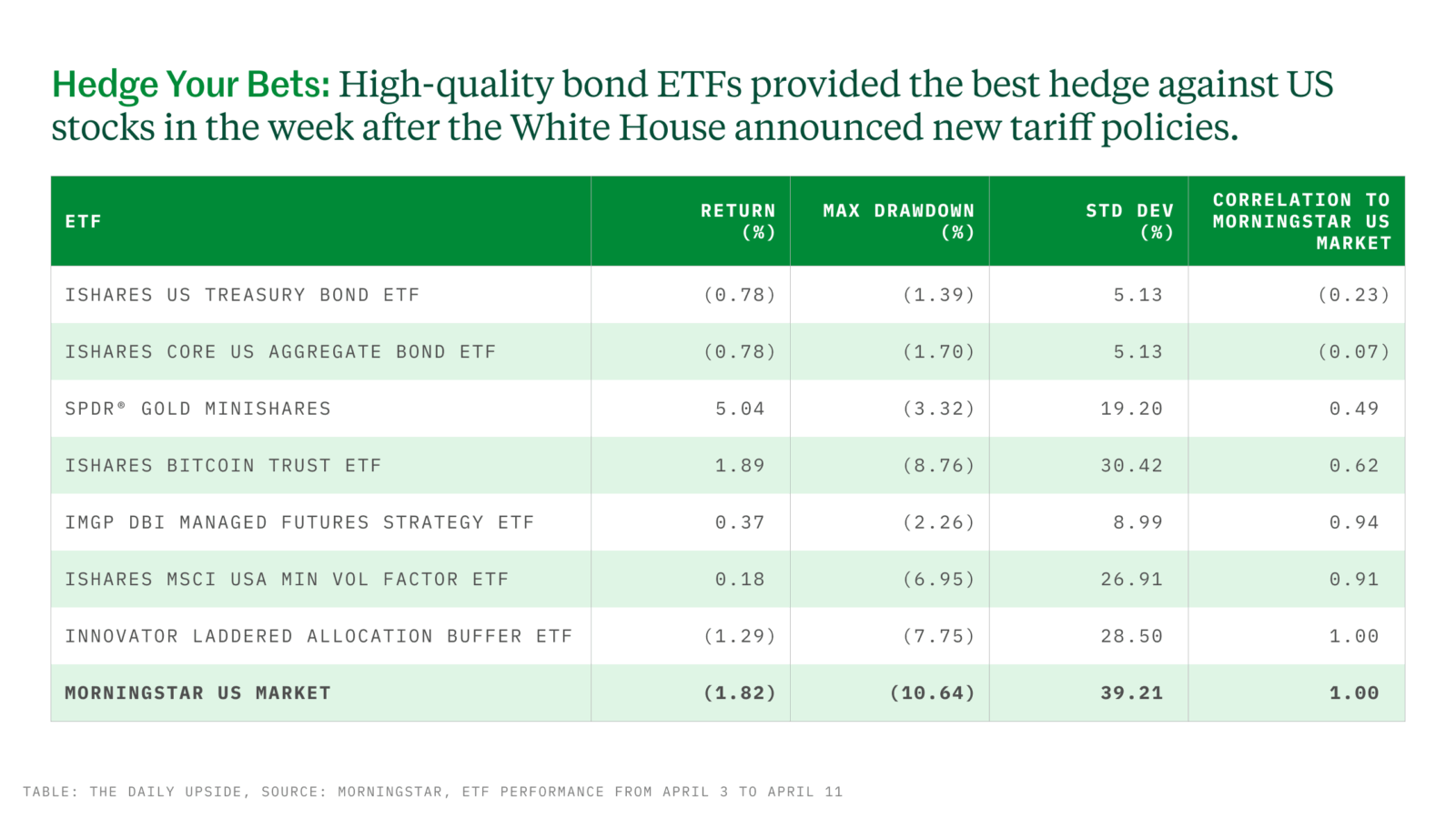Where Do You Turn When Stocks and Bonds are Hurting?
With volatility rising, advisors are scrambling to find both protection and returns, but answers are scarce.

Sign up for exclusive news and analysis of the rapidly evolving ETF landscape.
“Nowhere to run to, baby, nowhere to hide,” Martha Reeves & The Vandellas famously sang. The ‘60s Motown group was talking about a no-good man, but investors are feeling the same angst when it comes to their portfolios.
Financial markets have seen better days. Since the US enacted aggressive tariffs earlier this month, the S&P 500, Nasdaq, and Dow have all sunk into the red year-to-date. Traditionally safe assets are also in flux as 10-year Treasury yields have jumped to 4.37% following a major bond sell-off. With volatility rising, advisors are scrambling to find both protection and returns for their clients, but clear answers are scarce.
“Where do you hide?” said James St. Aubin, chief investment officer at Ocean Park Asset Management. “It feels like what happened in 2022 is happening again in 2025.”
Duck and Cover
For most, diversification remains key. Morningstar tested a range of ETFs tracking different assets to see which hedged US stocks best in the week following the tariff news, which sparked concerns that inflation would spike and the US economy might slump into a recession. While all the tested ETFs outperformed the Morningstar US Market index between April 3 and 11, high-quality bond funds — in this case the iShares US Treasury Bond ETF and iShares Core US Aggregate Bond ETF — had the lowest correlation with broadly declining equities.

While it would have been ideal to be diversified before the tariffs, it’s never too late to start allocating to different assets, especially since equity markets could remain in a slump, said Bryan Armour, director of passive strategies research at Morningstar. “With assets like bonds or managed futures, you’re certainly not buying on the highs right now,” he told ETF Upside, adding that even gold, currently trading at more than $3,300 per ounce, still offers a long-term store of value.
For others, protection goes beyond diversification, and Ocean Park takes a more tactical approach. The firm has four active ETFs — two for stocks and two for bonds — that contain “DUK” in their tickers. The funds have parameters in place that trigger buy or sell signals when markets show signs of rising or falling. Lately, the ETFs have gone almost entirely to cash equivalents. “What do you do if someone throws a fastball at your head? You duck,” St. Aubin told ETF Upside. “When we see danger in the market, we duck and get into cash.”
Bitfall. And what about bitcoin, which got its first spot ETFs last year? In theory, the world’s top cryptocurrency could act as a hedge, but that’s rarely the case, and it’s extremely volatile. Bitcoin has tumbled more than 6.5% year-to-date. “In 2022, when equities were in freefall, bitcoin collapsed even further,” said Davis Richardson, managing partner at tech consultancy R3 Insights. “People keep saying this could be the moment when bitcoin decouples from stocks, but I’m remaining cautious.”







